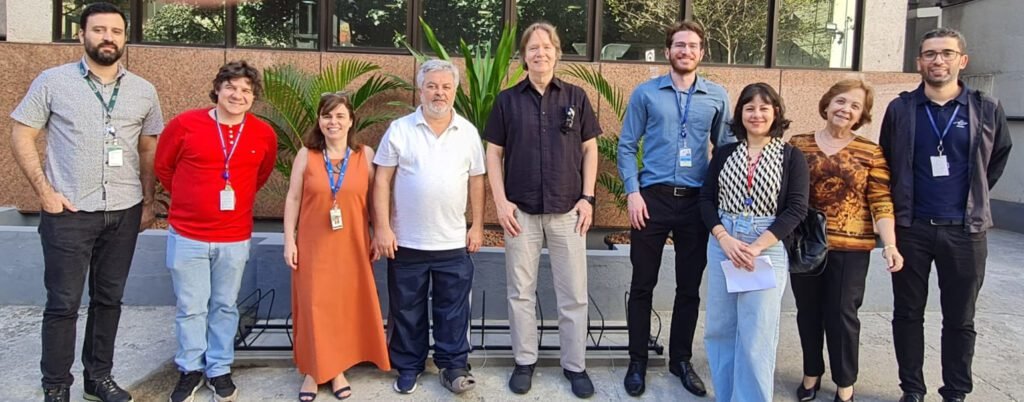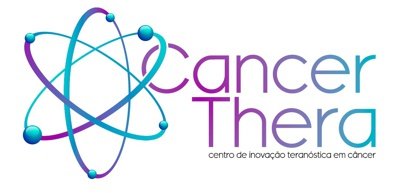On the morning of June 14, the team from Amazônia Azul Tecnologias de Defesa S.A. (Amazul) conducted a technical visit to laboratories at the Faculty of Medical Sciences of Santa Casa de São Paulo (FCMSCSP) and the Faculty of Medicine of the University of São Paulo (FMUSP), both located in São Paulo’s capital. Supervised by engineer Flávio Soares Pereira, the team was guided by principal, associate, and collaborating researchers from the CEPID CancerThera who work in these laboratories.
The visit began at FCMSCSP, accompanied by Dr. Luciana Malavolta Quaglio and Dr. Leonardo Lima Fuscaldi, both faculty members and, respectively, principal investigator and associate researcher of CancerThera. The Amazul team gathered information about license approvals, animal facility regulations, and other specifications. In addition, detailed photos were taken of equipment, facilities, and material organization.
The second part of the visit took place at the Integrated Radiopharmaceutical Production Center (CinRad), part of the Radiology Institute of the Hospital das Clínicas at FMUSP (InRad/HC-FMUSP). There, the Amazul group maintained the same level of thoroughness in collecting information. Accompanied by Dr. Fabio Luiz Navarro Marques, a researcher at CinRad and CancerThera associate, the technical team inspected several sectors, including imaging areas, cell handling, radiochemistry, sterilization, entry and exit points, molecular biology lab, and centrifuges.
Also accompanying the delegation were Professor Dr. Carmen Silvia Passos Lima and Professor Dr. Victor Marcelo Deflon, both principal researchers of CancerThera. The technical visits culminated in a virtual meeting held on June 21 to clarify questions and define the next steps in the cooperation between our institution and Amazul.
“The partnership with Amazul, which was recently recognized as a science, technology, and innovation institution, aligns with CancerThera’s goal of creating a theranostic cancer innovation center within the Unicamp complex to develop biomolecules with potential use for molecular imaging and treatments for various types of cancer,” emphasizes Quaglio.

Text: Romulo Santana Osthues | Photo: Acervo pessoal





